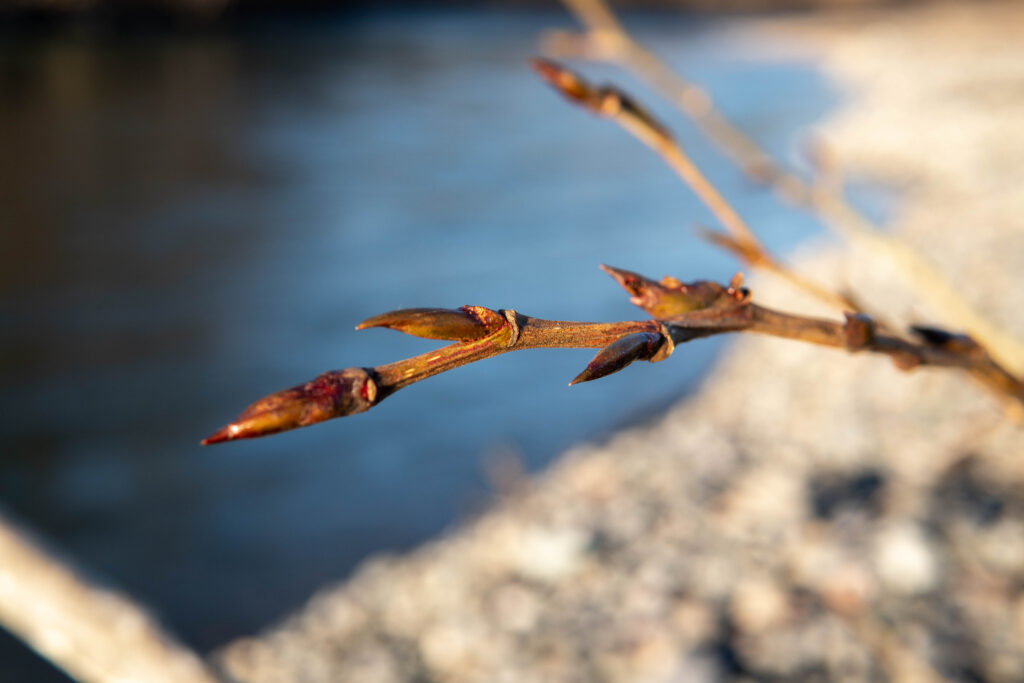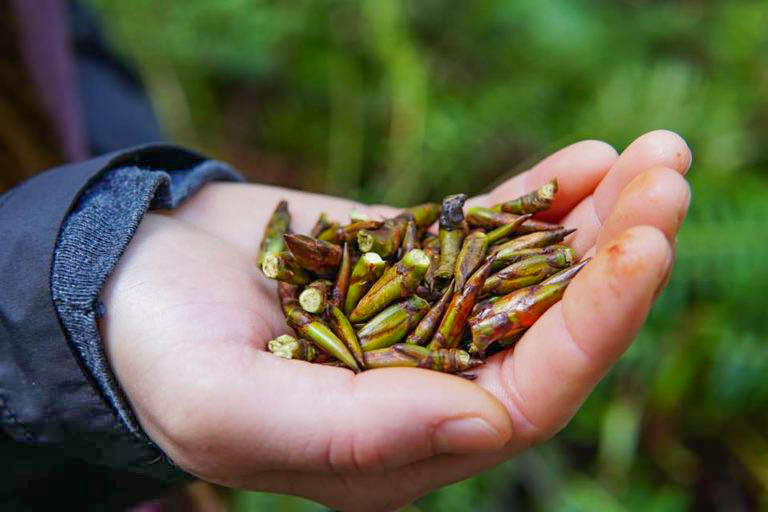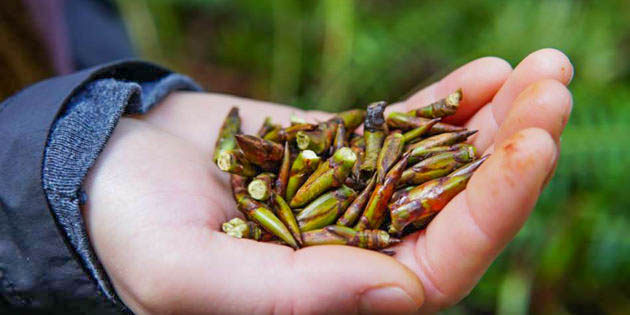
Considered to be among the most sacred of herbs throughout many ancient Eastern cultures, the renowned Balm of Gilead was once used in various forms of holy incense and anointing oils as a sacramental herb. It was also widely used in Christian, Islamic, Egyptian, Judaic, Greek, Hindu, and many other cultures as an ingredient in sacred incense that was burned as offerings to God, to connect more deeply to the divine, and to aid in one’s spiritual evolution.
In ancient times, it was such a rare material that it was included among the precious gifts of the Queen of Sheba to King Solomon as a show of reverence. In ancient Israeli culture, Balm of Gilead was counted as one of the most important herbs used in religious rituals for its blessed, healing smoke.
There has been much mystery surrounding the true identity and origin of the renowned Balm of Gilead, however. The confusion lies in the distinction between what ancient sources refer to as Balm of Gilead, Commiphora gileadensis, and what is known and commonly used as Balm of Gilead today in North America.
There is a tree referred to as Balm of Gilead, which grew in abundance upon the slopes of Mount Gilead in the Middle East, whose tales and stories are spread throughout the histories and legends of the Eastern World. However, what is commonly used as Balm of Gilead today in the Western world is most often the resinous winter buds of the North American Black Cottonwood and various poplar trees. I will speak about both of these botanicals throughout this article.

In ancient times, the true Balm of Gilead, also known as Judaean Balsam, is said to have only grown around the Dead Sea; but for many centuries has been extinct from the region. Today, commiphora gileadensis has become naturalized in parts of Somalia, Yemen, and Israel. There are many species of poplar and cottonwood from different continents that were all used by native peoples as sacred incense and herbal medicine as well.
Balm is a term that generally refers to a medicinal oil or resin. In the Old World, the Balm of Gilead was a term that often referred to healing in general, whether physical or spiritual. In Judaism, the Holy Spirit, or god, is considered to be the true Balm of Gilead. Balm of Gilead resin has been used for various religious purposes since even before the time of King Solomon and is mentioned several times throughout the Bible for its many virtues.
In ancient times the burning of Balm of Gilead, accompanied by prayer, was often employed for its ability to heal on the soul level, bringing restoration, nourishment, and rejuvenation to the wounded soul, while the upward flowing smoke was thought to carry prayer to the Heavens.
It is written that Mary, mother of Jesus washed Jesus’ clothes in the spring of Ayn Shams on her way to Palestine from Egypt. From that day, the spring was known to be blessed and considered sacred. During the Middle Ages, it was said that Balsam trees were only able to produce their aromatic secretion on lands that were watered by this holy spring. During the invasion of Titus, two battles took place at the two sacred Balsam groves of Jericho. In the frenzy, the Jews were fended off from trying to destroy the precious commiphora trees. From then on, the groves became public property and an imperial guard was set to protect them and their sacred bounty day and night for years to come.
The Bible mentions the true Balm of Gilead as a great comforter and friend to the broken-hearted. Many sources have stated that the botanical resin brings peace to the home, ends marital and sexual problems, and soothes arguments and quarrels between lovers, friends, and co-workers when placed around the neck or in the four corners of the home.
Unlock Your Free Issue Of...
🌿 The Aromatic Medicine Garden Membership 🌿
Are you ready for a deeper, holistic dive into the world of aromatic plants? See what our membership is all about with your free sneak peek issue, including an hour-long plant talk and a 21-page plant monograph pdf.

Today, this precious incense is still used in many of the same ways in which the ancients used it, though it is incredibly difficult to find. Among many religions it is still common to use the sweet, holy smoke of the Biblical Balm of Gilead in ritual, whether to heal the soul from trauma or wounds, to strengthen the channel to the Spirit World, or to honor thousands of years of rich tradition through religious ceremonies and rites. In addition to its many spiritual virtues, Balm of Gilead of the old world has also been used for ages as a medicinal incense for many different ailments and imbalances among various traditional medicine practices.
The fragrant, resinous buds of cottonwood and poplar trees have also been known for their use in various spiritual practices and healing ways for thousands of years among Native peoples throughout North America. Poplar buds are known in the Western Herbal tradition to clear inflammation and increase circulation to the respiratory system when their fumes or smoke are inhaled. The buds have traditionally been used internally to treat coughs, sore throat, bronchitis, and tonsillitis, as they soothe, disinfect, and astringe the mucous membranes. In fact, poplar buds are considered specifically for laryngitis that is accompanied by loss of voice.
Topically, and through the use of its smoke, it has a warming and moistening effect, relieving cold, stiff, and aching joints in the Fall and Winter months. It is commonly used in folk medicine in salves or ointments for this purpose. Topically it is also used to relieve symptoms of pain and arthritic conditions.
In Native American plant lore, poplar and cottonwood trees are considered the most sacred allies in the plant kingdom. They are believed to be messengers of the spirits by certain tribes, conveying guidance and wisdom from the Spirit World through the rustling of their leaves.
Balm of Gilead is no doubt one of the most popular incense herbs found throughout the age-old texts, myths, and stories of many ancient cultures. Its sweet, uplifting aroma carries with it a sense of comfort, wonder, and a touch of magic. By inhaling the holy smoke of this ancient incense through the nose and into the olfactory system of the brain, something is triggered deep within that can’t quite be explained, only experienced.
Both of these herbs of ancient, holy origins, whether used by the Native peoples of North America, or used in the religious traditions of the Middle East and North Africa, have captivated the hearts and touched the souls of many people around the world, and therefore deserve the respect and reverence they have gained through the ages of their fragrant history.
Balm of Gilead
Latin Names: Commiphora gileadensis, Populus sp.
Other Names: Balsam, Judaean Balsam, Balm Poplar, Balsam Poplar, Balm of Mecca, Black Cottonwood, Tacamahac, Hackmatack
Families: Commiphora, Salicaceae (Willow Family)
Planet: Venus, Saturn Element: Water Chakra: Heart (4th)
Parts Used: leaf bud, resin
Aroma: sweet, balsamic, woody, vanilla and cinnamon-like
Article by Evan Sylliaasen

Evan Sylliaasen is the founder of the Northwest School of Aromatic Medicine and Higher Mind Incense. For the past decade, his incense company has been a leader in sustainability and conscious sourcing of aromatic plants. As the head instructor of his online school, he teaches aromatherapists, incense lovers, herbalists, and spiritually-minded folks the traditional art of incense crafting, incense as medicine, and the art of wild-harvesting aromatic plants responsibly.
Evan lives with his family in the foothills of the Olympic Mountains of Washington state. He channels his creative passions through writing, photography, woodworking, craftsman building, and music. When he’s not working, he’s out in the garden, forest, and fields, walking along rivers, beaches, or in the mountains breathing deeply.
© 2016-2021 Evan Sylliaasen, Higher Mind Incense LLC. All Rights Reserved.
*This article was first published in Natural Herbal Living Magazine Poplar issue
*The statements above have not been evaluated by the FDA. This article is not intended to diagnose, treat, cure, or prevent any disease.
